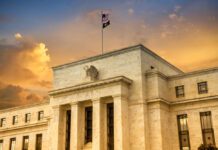
Comerica Economics forecasts for the Fed to cut the federal funds rate a quarter percent to a range of 4.25% to 4.50% at this week’s decision. The FOMC will likely signal that rate cuts will continue in 2025, but at a slower pace than between September and December.
Data releases this week will likely show consumer spending and business activity picked up as election uncertainty faded. S&P Global’s flash estimate of the December Services PMI will likely point to continued growth, and the Manufacturing PMI a return to expansion for the industry.
Retail sales and personal consumption expenditures (PCE) were likely solid in the kick-off of the holiday shopping season. Total and core PCE inflation likely continued to run a bit above the Fed’s target in November.
There was little in the latest CPI or PPI reports to deter the Fed from cutting rates again on Wednesday. The Consumer Price Index (CPI) rose by 0.3% in November and pushed annual headline inflation up a notch to 2.7%.
The Core CPI, which excludes volatile food and energy components, increased by 0.3% for the fourth consecutive month and was up 3.3% for the third month running in year-over-year terms. Led by an 8% increase in egg prices, food prices rose 0.4%.
Gasoline rose for the first time in three months, while electricity prices dipped. Prices of new and used vehicles rose for a second consecutive month, up 0.9%, but were still down nearly 2.0% from a year ago. Rent inflation moderated further and helped slow shelter cost inflation.
Motor vehicle insurance, a big contributor to overall inflation over the past several months, rose a modest 0.1% on the month but was still up 12.7% on the year. Prices of services, excluding shelter and energy services, a.k.a. “Super Core CPI”, increased by 0.3% in November and were up 4.2% year-over-year, tied for the lowest annual increase since January.
The Producer Price Index rose a larger-than-expected 0.4% on the month and 3.0% on the year, largely due to a 56% surge in wholesale egg prices. Core PPI was revised higher in September and October.
The federal deficit ballooned to $367 billion in November due to a large month-over-month fall in revenues, down 7.7%, and a steep increase in expenditures, up 14.4%. The $624.0 billion deficit in the first two months of the 2024-2025 fiscal year is up a staggering 64.0% from 2023-2024, which is likely to prolong upward pressure on long-term interest rates.
Blowing past the consensus, the NFIB Small Business Optimism Index surged by eight points to 101.7 and lifted the index above its 50-year average for the first time in three years. Small business owners were more upbeat across nine of the 10 subcomponents of the index.
The share of businesses expecting the economy and sales to improve jumped. A number of business surveys conducted since the election show a sharp rise in business confidence. Recovering “animal spirits” are a big source of upside potential for economic growth, hiring, and investment in 2025. The 11% jump in household net worth in the third quarter, fueled by surging stock prices and rising home values, is another positive for the economy.
Bill Adams is a senior vice president and chief economist at Comerica. Waran Bhahirethan is a vice president and senior economist at Comerica.





